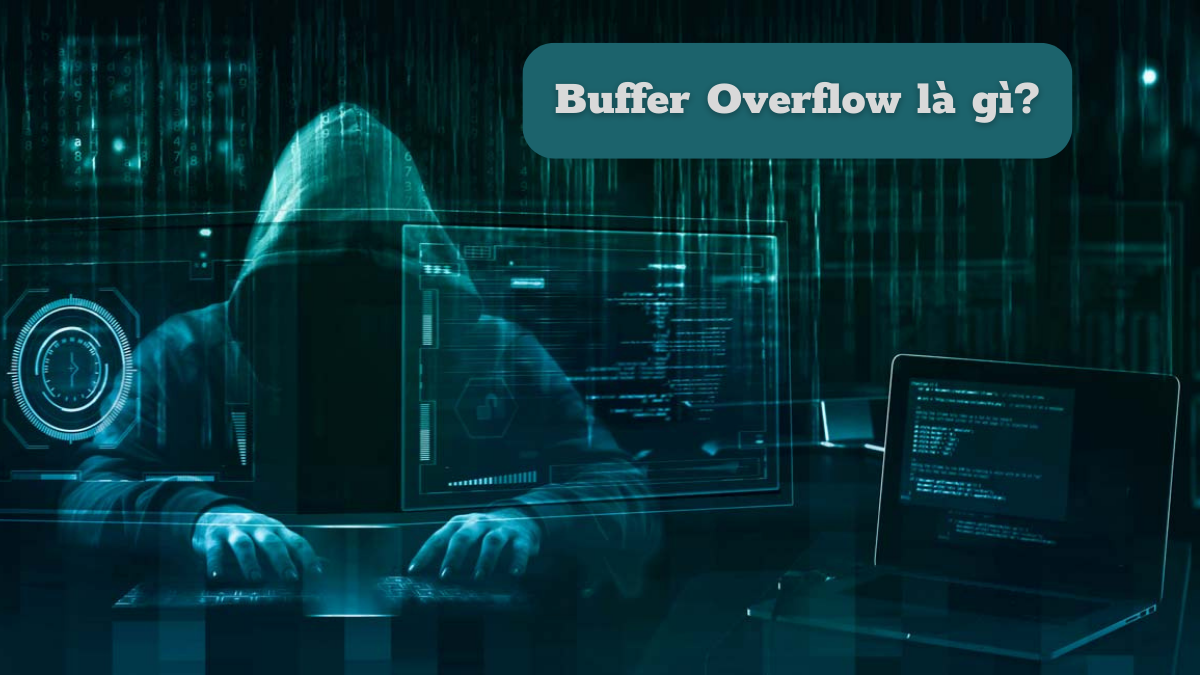What is Buffer Overflow? Its Common Attack Types
One of the most serious and common vulnerabilities in cybersecurity is "Buffer Overflow". This article TipsMake will give you an overview of Buffer Overflow, how it works, common types of attacks involved, and necessary protection measures.
What is Buffer Overflow?
A buffer overflow is a programming error that occurs when a program attempts to write data beyond the memory capacity allocated to a buffer (a temporary storage area). When this happens, the data can overwrite adjacent memory areas, leading to unwanted program behavior or even creating a serious security vulnerability.

What is Buffer Overflow?
The causes of Buffer Overflow are:
- Lack of Boundary Checking: Many programming languages, especially C, do not automatically check the size of the input against the buffer size. This allows users to send data larger than the buffer size without being detected.
- Programming error: Not allocating enough memory to the buffer can also lead to buffer overflow.
How Buffer Overflow Works
- Memory Structure: A program's memory is usually divided into several areas, including the stack and the heap. The stack stores temporary variables and function management information, while the heap is used for dynamic memory.
- Overwriting data: When a buffer is not large enough to hold the input data, the excess data overwrites other memory locations, which may be important variables or pointers.
- Exploiting the vulnerability: An attacker can send a specially crafted data string that overwrites the pointers or return addresses on the stack. When the function returns, instead of returning to the original address, the program will execute the code that the attacker inserted.
Types of Buffer Overflow Attacks
The main types of Buffer Overflow attacks include:
Stack-based Buffer Overflow
This is the most common type of attack, which occurs when a program writes data to a memory address that is outside the bounds of the stack. An attacker can overwrite local variables or return addresses on the stack, thereby changing the program's execution flow to perform malicious code or unwanted operations.
Heap Buffer Overflow
Heap Buffer Overflow occurs when data is written to an out-of-bounds memory address on the heap. The heap is a memory area used to store dynamic data and is typically manually managed. An attacker can exploit this vulnerability to overwrite heap metadata leading to arbitrary code execution or modification of critical data structures.
Integer overflow
Integer Overflow occurs when an integer operation produces a value that exceeds the limit that the data type can store. An attacker can provide input that is larger than the maximum value of the data type, resulting in manipulation of the operations and causing a buffer overflow.
Format strings
Format String attacks occur when an attacker uses unsafe format strings to access unauthorized memory. By inserting format characters such as %x or %n, an attacker can read or write to memory, leading to the disclosure of sensitive information or the execution of arbitrary code.
Unicode Overflow
Unicode Overflow is a form of attack in which an attacker inserts Unicode characters into a program's expected input, usually ASCII characters. Due to the larger size of Unicode characters compared to ASCII, this causes a buffer overflow and allows the attacker to perform malicious actions.
How to Prevent Buffer Overflow
To prevent Buffer Overflow vulnerabilities, security measures and secure programming are important. Here are some effective methods:
1. Input validation
Size and format check: Ensures that the input data does not exceed the allocated buffer size. This check helps prevent unauthorized overwriting of memory.
2. Use safety functions
Replace vulnerable functions: Instead of using functions like gets, scanf, or strcpy, use safer functions like strncpy and snprintf. This helps reduce the risk of Buffer Overflow attacks.
3. Enable compiler security features
Use protection features: Enable features such as stack canaries, Address Space Layout Randomization (ASLR), and Data Execution Prevention (DEP) in the compiler. These mechanisms help protect the program from Buffer Overflow attacks.
4. Update software regularly
Update patches: Make sure your operating system and software are always updated to fix exploitable security vulnerabilities.
5. Use safe programming languages
Choose a language with built-in protection: Use programming languages like Java, Python, or C# that have automatic memory management mechanisms, which help minimize the risk of Buffer Overflow.
6. Implement additional security measures
Use firewalls and intrusion detection systems: These tools help monitor and detect suspicious activity, thereby stopping attacks before they happen.
7. Check the source code
Perform regular source code audits: Review source code to detect and fix potential vulnerabilities that can lead to Buffer Overflow.
Conclude
Buffer Overflow is a serious security vulnerability that can have very serious consequences. Understanding how it works and the common types of attacks can help you better protect your system. Apply programming measures and regularly update security patches to minimize risks at all times.
TipsMake hopes that this article has provided you with useful information to raise your cybersecurity awareness and protect your data from Buffer Overflow attacks.
 What is SSRF Attack? How to Prevent SSRF Attack
What is SSRF Attack? How to Prevent SSRF Attack What is Ransomware Bad Rabbit? How to prevent this malware effectively
What is Ransomware Bad Rabbit? How to prevent this malware effectively What is a Honeypot? The Benefits and Risks of Honeypots
What is a Honeypot? The Benefits and Risks of Honeypots What is HSTS? How does it work?
What is HSTS? How does it work? What is Pharming? General information about Pharming you should know
What is Pharming? General information about Pharming you should know What is Network Security and the benefits it brings?
What is Network Security and the benefits it brings?